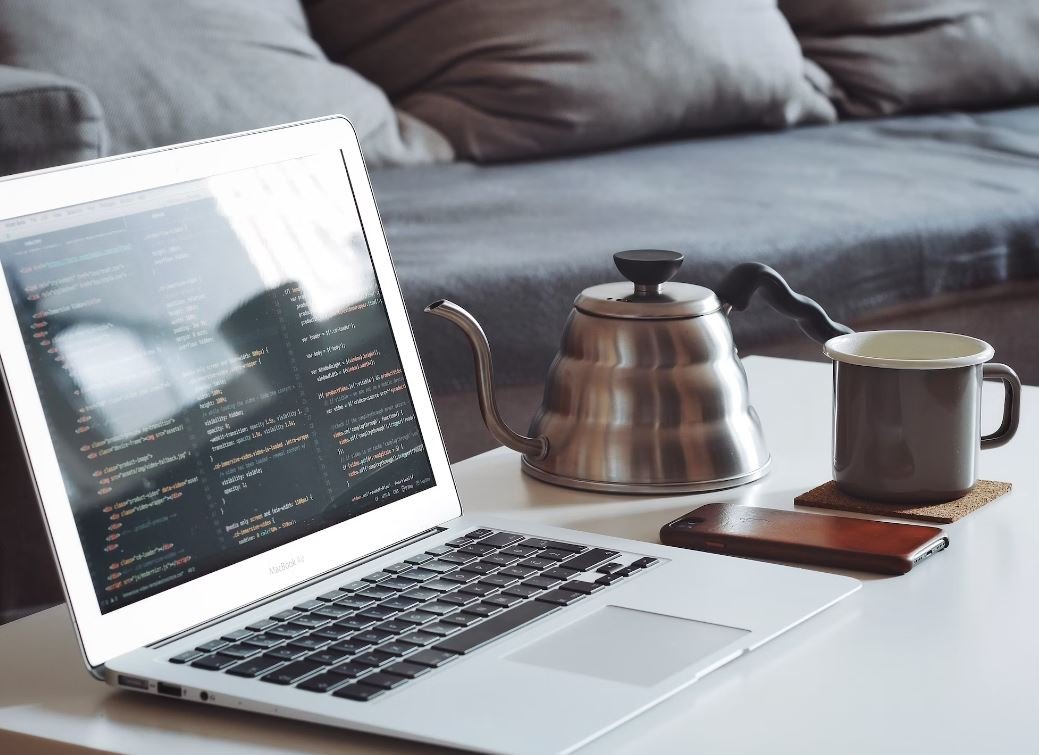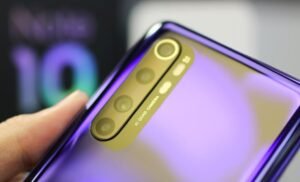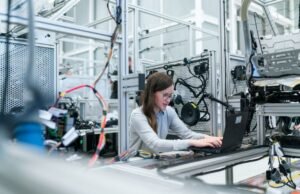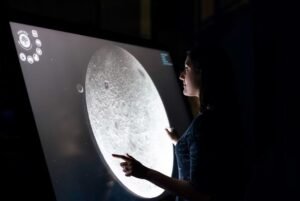Why AI Art Is Bad
Artificial Intelligence (AI) has made significant strides in various industries, including art. AI-generated art has gained popularity in recent years, blurring the line between human creativity and automation. While AI art may have its advantages, there are several reasons why it is considered bad for the art world. In this article, we will explore the drawbacks and consequences of AI art.
Key Takeaways:
- AI art lacks human emotion and creativity.
- It devalues the role of the artist.
- AI art may lead to ethical and copyright concerns.
One of the main concerns with AI-generated art is its lack of human emotion and creativity. Traditional art is often deeply personal, expressing the artist’s emotions, experiences, and interpretations of the world. **AI algorithms lack the ability to truly understand and replicate these complex human qualities**. While AI can mimic certain artistic styles, it falls short in capturing the depth and uniqueness of human expression.
*AI-generated artworks sometimes lack the depth and authenticity that comes from a human artist’s personal experiences and emotions.* The output may appear calculated and formulaic, lacking the imperfections and rawness that can make traditional art so captivating.
| Disadvantages of AI Art | Consequences |
|---|---|
| 1. Lack of human emotion and creativity | 1. Art loses its emotional and personal touch. |
| 2. Devaluation of the artist’s role | 2. Risk of undermining the value and significance of human artists. |
| 3. Ethical and copyright concerns | 3. Legal and moral challenges surrounding ownership and originality of AI-generated art. |
Furthermore, the rise of AI art poses a threat to the role of the artist in society. **By replacing human artists with algorithms, AI art risks devaluing the craftsmanship, creativity, and expertise that artists bring to their work**. This could potentially marginalize artists and diminish their importance in the art world.
*The unique perspectives and interpretations brought by human artists can never be fully replicated by machines, evident in the art pieces they create.* The involvement of AI in the creation of art undermines the essence of what makes art a deeply human endeavor.
AI Art Disadvantages:
- Lacks human emotion and creativity.
- Devalues the role of the artist.
- Potential ethical and copyright concerns.
Aside from the artistic concerns, AI art also raises ethical and copyright issues. The ownership and originality of AI-generated artwork are complex topics. **Determining who owns the rights to an AI-generated artwork can be challenging, as it involves multiple parties including the programmer, the AI itself, and possibly data contributors**. Additionally, AI algorithms may unintentionally incorporate copyrighted material in their creations, which can lead to legal disputes and dilemmas.
*The legal and ethical aspects surrounding AI-generated art are still being explored and debated within the art community and beyond.* These challenges require careful consideration to ensure fair attribution and protection of intellectual property rights.
Artistic Dilemmas:
- Lack of human emotion and creativity.
- Devaluation of the artist’s role.
- Ethical and copyright concerns.
The table below provides further insights into the disadvantages and consequences of AI art:
| Disadvantages | Consequences |
|---|---|
| Lack of human emotion and creativity | Art loses its emotional and personal touch. |
| Devaluation of the artist’s role | Risk of undermining the value and significance of human artists. |
| Ethical and copyright concerns | Legal and moral challenges surrounding ownership and originality of AI-generated art. |
Considering these multiple factors, the integration of AI in art creation raises significant concerns about the future of the artistic landscape. It is essential to navigate these challenges and find a balance that preserves the integrity and value of human artistry.
*The art world needs to have an ongoing dialogue about the implications and consequences of AI art rather than rushing to embrace it wholeheartedly.* By exploring these complex issues, we can ensure that artistic expression maintains its beauty, emotional depth, and human connection.

Common Misconceptions
AI Art is Not Authentic
One common misconception about AI art is that it lacks authenticity. Some individuals believe that artwork created by machines cannot possess the same level of creativity or emotional depth as artwork created by humans. However, it is important to recognize that AI algorithms are developed by humans and are heavily influenced by the data they are trained on. AI artists have the ability to create unique and original pieces just like human artists:
- AI algorithms can produce novel and innovative compositions.
- Machine learning allows AI artists to learn from vast amounts of artistic data, enabling them to create art that reflects various styles and techniques.
- AI art can evoke emotions and provoke thoughts, just like any other form of art.
AI Art is a Threat to Human Artists
Another misconception surrounding AI art is that it poses a threat to human artists and will render them obsolete. However, this fear is unfounded as AI art is meant to complement rather than replace human creativity and talent:
- AI art can be used as a tool for human artists, providing them with new techniques and inspiration.
- The collaborative efforts between AI and human artists can lead to the creation of unique and groundbreaking pieces.
- AI art can free up human artists’ time from mundane tasks, allowing them to focus on more creative and innovative aspects of their art.
AI Artists Lack Conceptual Understanding
One misconception is that AI artists lack a conceptual understanding of their work, resulting in art that is lacking in meaning or depth. While AI algorithms may not possess the same cognitive understanding as humans, they can still generate art that carries significance:
- AI algorithms are capable of analyzing and understanding patterns and relationships in the given dataset.
- The AI can be trained to understand specific concepts and generate art that reflects those concepts.
- AI art can provide fresh and alternative perspectives, challenging traditional notions of artistic meaning and interpretation.
AI Art is Cold and Impersonal
Some people think that AI art is cold and impersonal, lacking the human touch and emotional connection found in traditional art. However, AI has the potential to create art that is both technically proficient and emotionally resonant:
- AI algorithms can learn from and mimic human artistic styles, resulting in artwork that mirrors the emotional expression found in traditional art.
- AI artists can be programmed to generate art that evokes specific emotions or sentiments.
- AI art can provide a different perspective on human emotions, offering unique interpretations and representations.
AI Art is Easy and Less Valuable
There is a misconception that AI art is easy to create and therefore less valuable compared to traditional art. However, this perception overlooks the complexity involved in developing AI algorithms and the potential artistic value they bring:
- Creating AI art requires a deep understanding of both artistic principles and technical algorithms.
- AI art can challenge conventional notions of creativity and expand the boundaries of artistic expression.
- AI-generated art can be rare and exclusive, making it valuable to collectors and art enthusiasts.

The Impact of AI Art on the Art Market
AI-generated artwork has been a controversial topic in recent years, raising debates about the authenticity and value of such creations in the art market. The following tables provide insights into the impact of AI art on key aspects of the industry.
The Rise of AI Art Exhibitions
In the past decade, there has been a significant increase in the number of AI art exhibitions worldwide. These showcases not only display AI-generated artworks but also encourage dialogue about the intersection of technology and creativity.
Perception of AI Art by Art Professionals
The perception of AI-generated artwork varies among art professionals, with some embracing the technology as a new form of creativity, while others express skepticism about its artistic value and authenticity.
AI Art’s Influence on Traditional Art
AI art has begun to influence and inspire traditional artists, fostering a new wave of creative exploration. This table explores how AI-generated art has influenced diverse artistic styles and techniques.
The Economic Value of AI Art
The economic value of AI-generated art has been a point of discussion in the art market. This table showcases some notable sales of AI art and the associated prices.
Challenges Faced by AI Artists
Despite the advancements in AI technology, AI artists face several challenges. This table explores common issues encountered by AI artists and how they navigate them.
AI Art’s Impact on Copyright Laws
The rise of AI art poses several challenges regarding copyright laws and intellectual property. This table sheds light on legal considerations and copyright issues surrounding AI-generated art.
Public Reception and Engagement with AI Art
Public reception and engagement with AI art have been mixed. This table highlights public opinion and interest in AI art exhibitions and installations in various cities.
AI Artists Pushing the Boundaries
Several AI artists have emerged as pioneers in pushing the boundaries of creativity and technology. This table introduces notable AI artists and their groundbreaking works.
AI Art’s Ethical Implications
The development and use of AI in art raise ethical concerns. This table explores the ethical implications surrounding AI-generated art and its impact on society.
In the rapidly evolving art landscape, AI art has emerged as a controversial and thought-provoking subject. The tables presented here shed light on various aspects of AI-generated artwork, including its impact on the art market, artists, and society. While some celebrate the possibilities AI offers for creativity, others question its authenticity and the role it plays in redefining the boundaries of art. As the field of AI art continues to evolve, it will undoubtedly spark further debates and reshape the way we perceive and engage with art.
Frequently Asked Questions
What is AI art?
AI art refers to artworks that have been created or generated using artificial intelligence technologies, such as machine learning algorithms. These algorithms can analyze and learn from huge amounts of data in order to generate or assist in the creation of visual or auditory artworks.
Why is AI art controversial?
The controversy surrounding AI art arises from various concerns. Some argue that AI art lacks the human touch and emotional depth that traditional artworks possess. Others express concerns about the originality and autonomy of AI-generated art, as well as the potential for AI algorithms to reinforce existing biases or create morally questionable content.
Does AI art devalue the role of human artists?
There is a debate over whether AI art devalues the role of human artists. While some argue that AI art can complement human creativity and enable new forms of artistic expression, others worry that it diminishes the uniqueness and value of human artistic abilities and undermines the traditional art market.
What are the ethical considerations associated with AI art?
Ethical considerations related to AI art include issues of authorship and ownership, as well as concerns about the potential misuse of AI algorithms. Additionally, questions of cultural appropriation, privacy, and the impact of AI-generated art on societal values and norms are also areas of ethical concern.
Can AI art be considered as a form of creativity?
Whether AI art can be considered a form of creativity is a subject of ongoing debate. While AI algorithms can produce aesthetically appealing artworks, the ability to experience emotions, make conscious decisions, and possess original creative intent is generally considered unique to humans. Thus, the concept of AI art raises questions about the nature of creativity itself.
What are the limitations of AI art?
AI art has several limitations. Machine learning algorithms rely on existing data to generate art, which means they often reproduce existing styles or patterns rather than innovate in entirely new directions. Additionally, AI algorithms lack the ability to conceptualize and deeply understand the meaning or context behind artworks, limiting their artistic interpretation abilities.
Does AI art have commercial potential?
Yes, AI art does have commercial potential. AI-generated art has attracted the attention of collectors and buyers, and some AI-generated artworks have been sold for substantial amounts of money. However, the long-term commercial viability and sustainability of AI art market remain uncertain due to the aforementioned concerns and limitations.
How does AI art impact the art community?
The impact of AI art on the art community is multifaceted. Some artists embrace AI as a tool for enhancing their creative processes, while others view it as a threat to their traditional artistic practices. AI art also raises questions about the accessibility of art and the potential exclusion of artists who are unable or unwilling to adopt AI technologies.
What is the future of AI art?
The future of AI art is uncertain. Advances in artificial intelligence and increased adoption of AI technologies in creative fields may lead to further developments in AI-generated art. However, the ethical, societal, and artistic implications of AI art will continue to shape the future of this field.
Is AI art inherently “bad”?
Whether AI art can be considered inherently “bad” is subjective and depends on one’s perspective. While some argue that AI art lacks the qualities that make traditional art valuable, others see it as an exciting frontier that expands the possibilities of artistic expression. Ultimately, the judgment of AI art’s “goodness” or “badness” remains a matter of personal interpretation.




